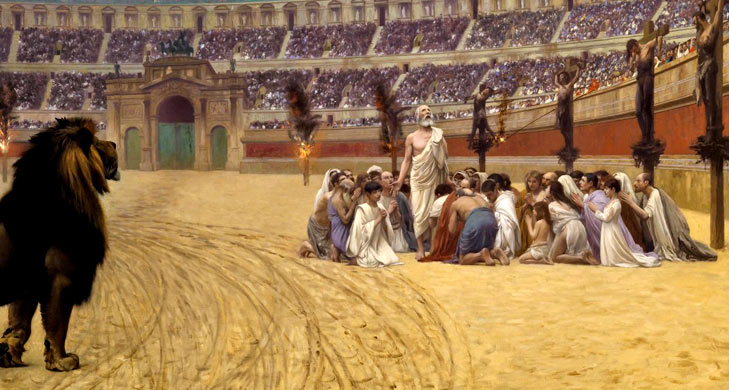Christians have faced persecution somewhere or the other in this world from the early days. It won’t be wrong to state that persecution of Christians began right from the time Christianity was founded. The symbol of Christians globally is the cross, which represents the wooden frame Jesus Christ was crucified on. After the crucifixion of Christ, his followers were persecuted by the religious authorities of the time.
These authorities were mainly the Roman emperors and magistrates. Today, even though Christians enjoy religious freedom, persecution remains a fact of life for them in certain places. Let’s now explore the history of Christian persecution right from earlier times.
The Roman Empire
Details of Christian persecution can be found in the New Testament. Among the first Christian martyrs was Stephen according to the book of Acts. He was a member of the early church who was charged with blasphemy as was brought before the assembly of Jewish religious leaders, called Sanhedrin. He was then stoned and mass persecution of Christians began, which was led by the Saul of Tarsus.
However, Saul later changed his name to Paul and became a Christian himself. The reason was his vision of Jesus Christ in the clouds. After he converted to Christianity, he was subject to several beatings and imprisonments.
The Middle East
With the rise of Islamic rule in the Middle East during the 7th century, many conquests happened. Large communities of Christians became victims of these conquests. The Islamic rulers set forth a set of principles that limited the practices of Christians. The followers of Christ were forbidden from displaying the cross on churches and using the bell to summon believers.
Soon, the status of ‘dhimmi’ or ‘protected status’ was given to the Christians. They were seen as inferior to Muslims and had to pay a tax called ‘jizya’. Christians were encouraged to convert to Islam, but Muslims who converted to Christianity were considered apostates.
The French Revolution
By the early 18th century, Christianity had attained dominance in most of Europe. Despite this, there was mass persecution of Christians in France during the 1790s. The French Revolution overthrew the monarchy of Louis XVI. A republican form of government replaced the monarchy in France. This proved to be an unfortunate event for the Catholic Church, which held great power and wealth.
It owned almost 6% of the land in the country. This prompted the new government to take some serious steps to curb the power of the Catholic Church. Soon, a mass campaign against the Christian faith took place, which led to the Reign of Terror.
The churches and Christian monuments, symbols, and signs were destroyed. Even religious education was forbidden as a part of this campaign. It came to an end only when Napoleon Bonaparte took over as the new head of government.
20th Century Europe
The Soviet Union was established under Vladimir Lenin in Russia in 1922. This led to the government targeting religious practices, particularly of the Russian Orthodox Church. The new communist government of Russia wanted to eliminate religion. As a result, many of the clergymen were either sent to labour camps or executed.
Then, in 1941, the invasion from Nazi Germany caused Joseph Stalin to revive the Orthodox Church. This didn’t last long, as curbs on religious worships returned under his successor, Nikita Khrushchev, during 1959. Religious freedom for Russian Christians was revived only when the Cold War ended.

